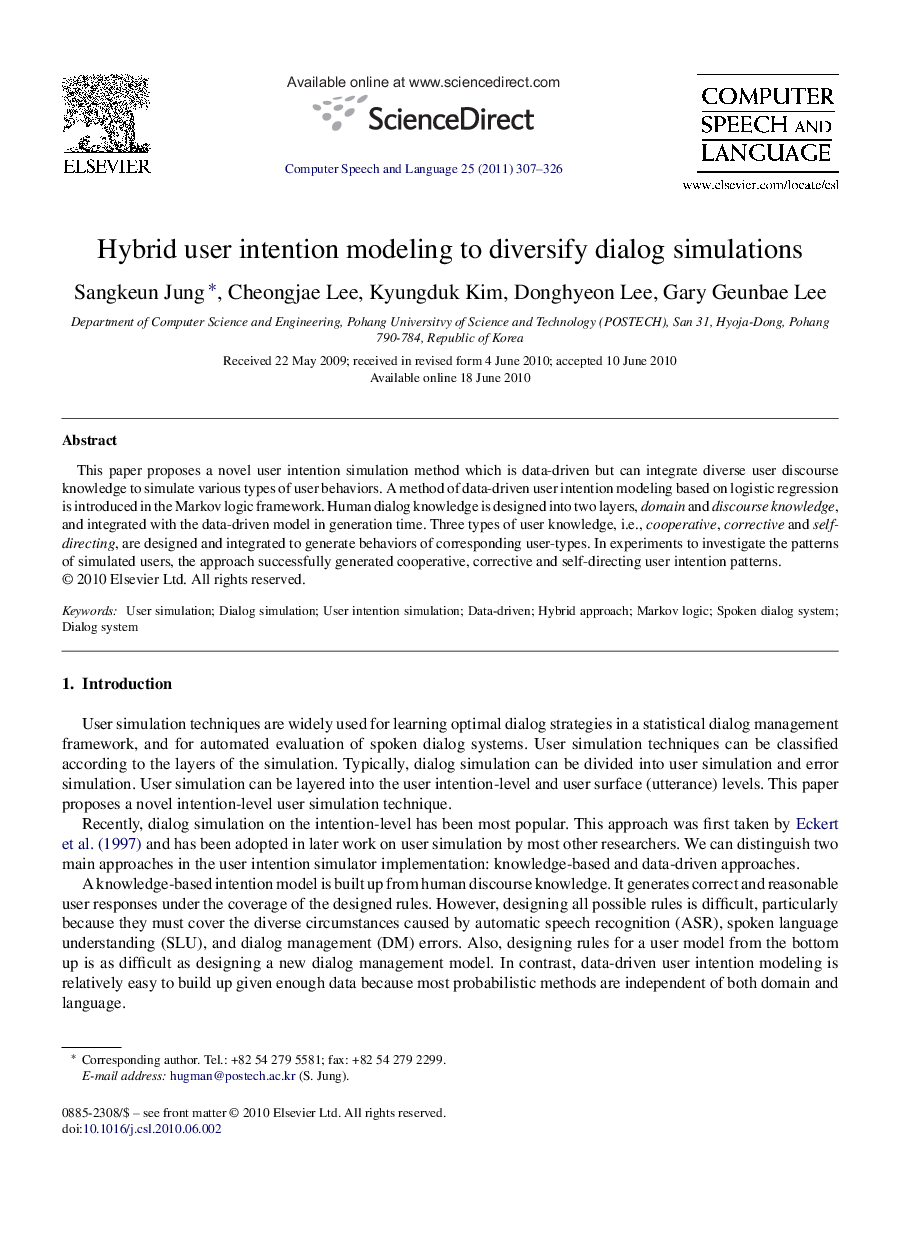| Article ID | Journal | Published Year | Pages | File Type |
|---|---|---|---|---|
| 559087 | Computer Speech & Language | 2011 | 20 Pages |
This paper proposes a novel user intention simulation method which is data-driven but can integrate diverse user discourse knowledge to simulate various types of user behaviors. A method of data-driven user intention modeling based on logistic regression is introduced in the Markov logic framework. Human dialog knowledge is designed into two layers, domain and discourse knowledge, and integrated with the data-driven model in generation time. Three types of user knowledge, i.e., cooperative, corrective and self-directing, are designed and integrated to generate behaviors of corresponding user-types. In experiments to investigate the patterns of simulated users, the approach successfully generated cooperative, corrective and self-directing user intention patterns.
